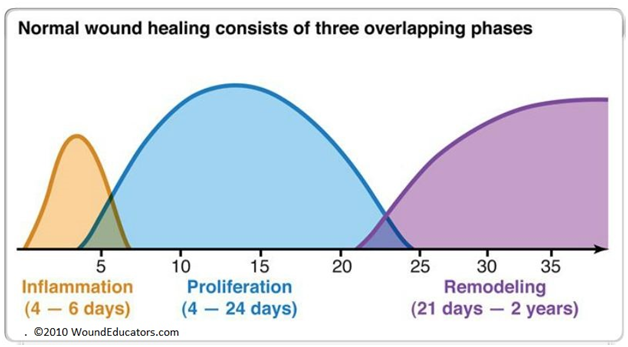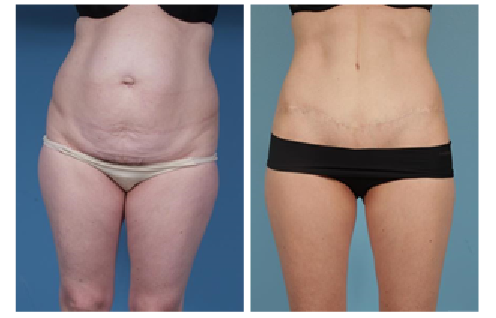Although we know more today than ever before about the science of wound healing, the scar-less surgical procedure has yet to arrive.
So while I can’t promise to make the evidence of your tummy tuck or breast reduction invisible, I can promise that when you come to me for surgery in Chicago, your scars will be the most unobtrusive ones my profession can provide.
As a plastic surgeon, I’ll hide your incision inside an anatomic border (such as the hairline) or place it so it will be covered by clothing whenever possible.
My Special Sensitivity
During my career in academic medicine, including 25 years as Professor of Plastic Surgery at Northwestern University, I’ve researched the mechanisms of scarring and developed innovative treatments.
I’ve published about 200 papers and hold several US patents. Having delved into the wound healing process on a molecular level I am now blessed with a special sensitivity to it and special skills for preventing scar formation.
What Causes Scars?
1. Inflammation as the body reacts to absorbent sutures and hair follicles
2. Tension
3. Genes (an individual’s body chemistry influences its healing style)
This chart below displays the healing process of scars across the number of days post-operation.
How Can Scars Be Minimized?
- Minimize inflammation. My research has resulted in new understanding of how to minimize inflammation at the incision site.
- Control tension using non-absorbent sutures and skillful stitching techniques.
Here’s an example. The photos below are of a woman who came to me with typical scars across her lower abdomen (see the photo on the left). Fat deposits had rendered them particularly visible.
The photo on the right shows how she looked after I performed her tummy tuck. I was able to give her a flat hairline scar in place of her previous raised scars, just by:
- Removing the tissue containing the original scars, and
- Closing her incision in layers, taking care to precisely place the sutures so the knots lay underneath the skin. This is how I “splint” the skin, protecting the vulnerable cells along the incision line from tension.
She was, of course very happy with the outcome.
Postoperative Care
While scars are rarely a problem after facial surgery, body procedures (like breast surgery and tummy tuck) are more challenging. For a variety of reasons scars form more readily below the neck.
The chances of scarring decrease when you follow my strict post-op instructions. Here are 3 principles I’ll be insisting on (sternly) after any procedure you book with me.
1. Keep the immature incision covered with paper tape, steri-strips or silicone gel.
- Apply tape for 1 to 3 weeks.
- After 3 weeks use silicone gel for about two months more.
- Once you see the scar fading you may discontinue care.
2. Avoid excess moisture
- If there’s drainage from the incision – you’ll know because the area underneath the paper tapes will be appear moist – remove the tapes, clean the incision with soap and water and apply ointment until the drainage has stopped.
3. Keep the area clean
- Bacteria live on the skin. This is normal and not harmful. But in the presence of moisture they’ll multiply and increase inflammation, the enemy of proper wound healing.
Problem Scars: Know the Signs and Treat Properly
It’s much easier to prevent an unsightly scar than to treat it. Treating it usually requires surgical scar revision. If you notice a scar starting to look elevated, itchy, or red, your body is most likely in the process of forming a ropy, unsightly scar. We have steroid injections and other therapies to reverse what’s going on at that point. Don’t let the situation fester. The longer you wait, the more damage we have to undo.
The Quest Continues
I continue to lecture on scar treatment at national and international medical conferences. I feel certain the era of scar-less surgery will arrive. In the meantime, you can rest assured that your surgical outcomes will benefit from my long quest to uncover the mechanisms of scar formation.
If you’re interested in learning more about minimizing scars and their appearance, visit my previous 3-part blog post about How & Why Scars Form, Preventing and Reducing Scars, and Effective Treatment for Mature Scars.





Leave a Reply